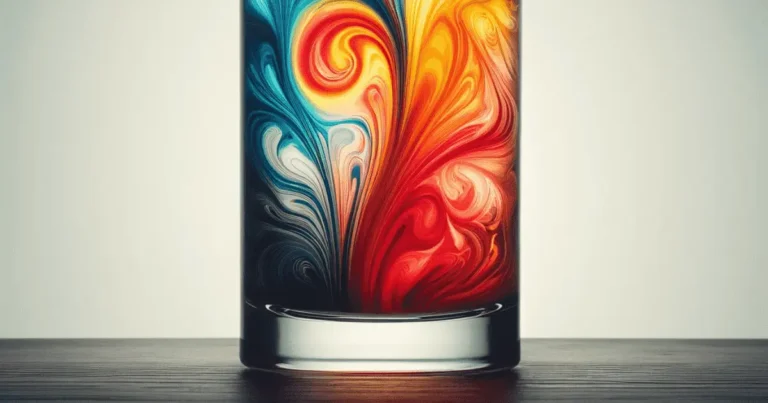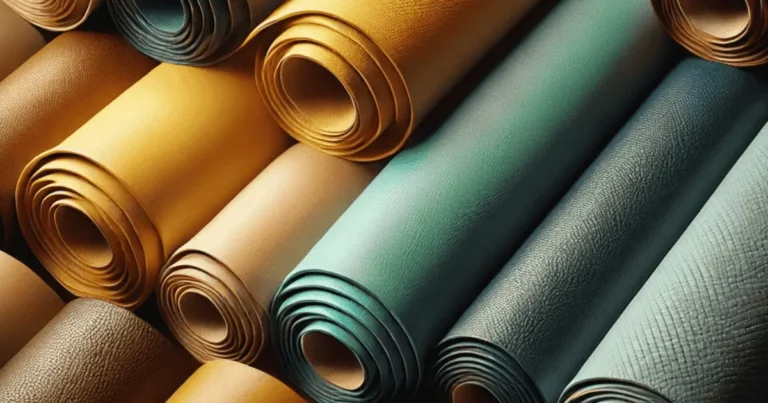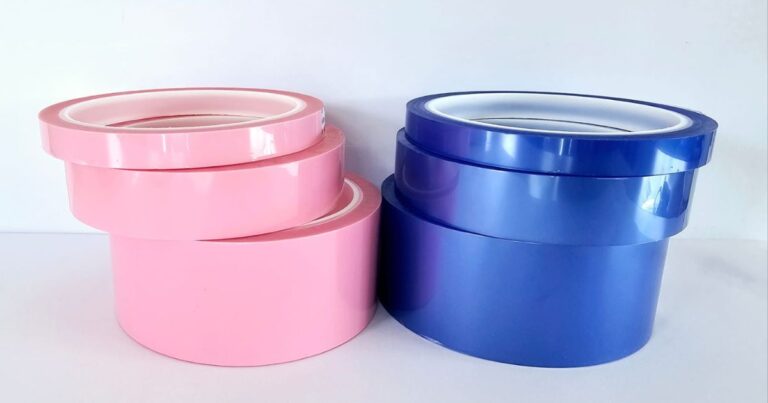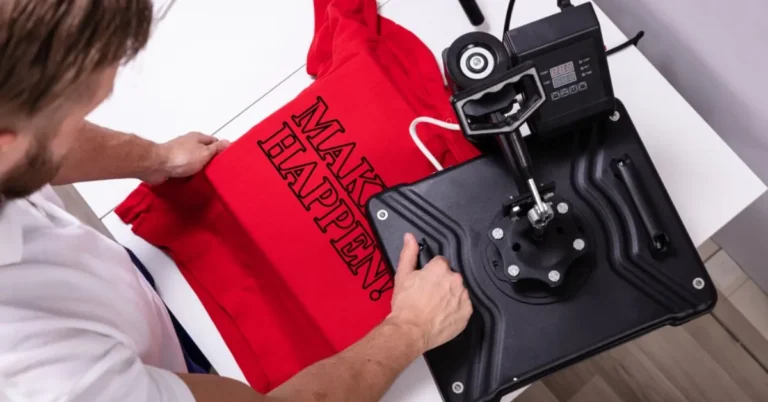Can You Use an Iron Instead of a Heat Press
Do you want to know that can you use an iron instead of a heat press? All of the information you require is provided. Read on.

The simple response to the question “Can you use an iron instead of a heat press?” is”Yes, you can use an iron instead of a heat press!” For some heat-pressing jobs, you can use a regular iron instead of a heat press. But the main thing that determines this is the heat transfer material you choose.
What you use for heat transfer materials is very important when you use iron for heat press jobs. It’s not possible to use iron-on on many of the materials because the effects won’t be very good. Let’s go deeper to find out more.
Related Post: Can You Sublimate a Tumbler Twice
Key Takeaways:
- Yes, you can use an iron instead of a heat press for heat transfer projects, but results may vary based on the materials used.
- Use a non-steam iron with a clean, smooth surface for better heat transfer results; avoid using irons with steam holes.
- Heat presses are more precise but expensive, while irons are budget-friendly and suitable for small or beginner projects.
- Key materials include heat transfer vinyl, cutting tools, a weeding tool, a Teflon sheet of parchment paper, and a flat ironing surface.
- Ensure proper duration, temperature, and pressure, and follow cold or hot peel instructions for successful heat transfers with an iron.
Can You Use An Iron Instead of a Heat Press:

In recent years, heat transfer projects have become more and more popular. These projects let people add unique images to their clothes and other items. A lot of people use heat press machines for these kinds of jobs, but a lot of people wonder if they can get the same results with an ordinary iron.
The short answer is “yes,” you can use an iron for heat transfer projects. However, there are some things you should know and follow.
For heat transfer to work, the iron needs to be carefully controlled in terms of temperature and pressure. If you don’t want to buy a heat press machine, you might be able to get better results by using an iron instead. It may take some practice, though.
But it’s important to keep in mind that the heat transfer might not be as good as with a heat press, and it might not work for making a lot of things at once.
Related Post: Can You Sublimate on Canvas
What Type of Home Iron Is Best?
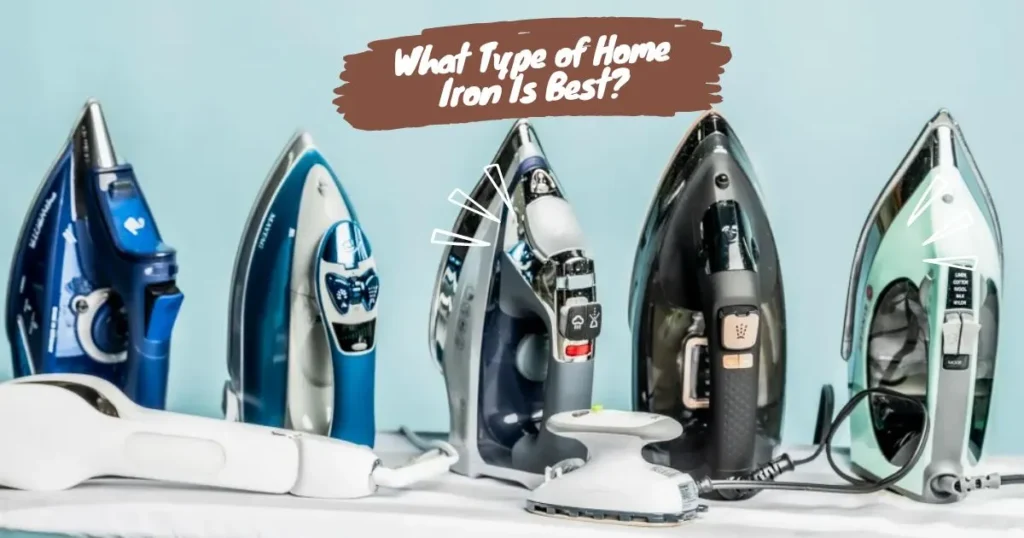
If you’re serious about continuing your trip with the household iron, you should buy a separate iron for crafting. Because a used iron for the home could have dirt, dust, cloth lint, or stains that won’t come out.
Even so, if you are on a tight budget, you should use baking soda paste to clean the pressing surface of your home iron. Mix 2 tablespoons of baking soda with 1 tablespoon of water, then spread it out evenly. With the cloth, clean the surface well and softly.
A normal iron, not a steam iron, is the best iron for everything else. Most irons don’t have holes for steam, but steam irons do have holes under the metal surface. It will stick to HTV better than a steam iron’s surface with holes, which is why the surface is smooth.
There will be less heat from the steam iron holes, which will quickly cause the HTV to wear out.
Related Post: Can You Sublimate On Rayon
Cost Comparison: Heat Press Machines vs. irons
Two very different things, heat press machines, and home irons, have very different prices. Heat press machines are specialized tools made for jobs that need to transfer heat.
They have many features that make sure the results are good, such as accurate temperature control, even pressure spread, and more. But these tools can be very pricey. Depending on the size and features, they can cost anywhere from a few hundred to several thousand dollars.
A home iron, on the other hand, is a cheaper choice; you can get one for as little as $20. It might not give you as much control and stability as a heat press machine, but it can still work for smaller projects or for people who are just starting and want to play around with heat transfer.
- Heat press machines are specialized tools made for jobs that need to transfer heat.
- They let you precisely control the temperature and spread the pressure evenly.
- A cheaper choice is a household iron, which starts at $20.
- You might not be able to control them as well as with a heat press.
- Good for newbies or projects with smaller needs.
- For long-term heat transfer jobs, buying a heat press machine might be a better choice.
Materials Needed for Heat Transfer With An Iron:
Several important things are needed for an iron to effectively transfer heat.
To begin, heat transfer vinyl is the main thing that is used to put patterns on clothes. Heat transfer vinyl comes in some different styles, such as smooth, glitter, flocked, glossy, and more. Which vinyl you choose relies on your taste and the effect you want.
You will need heat transfer vinyl and either a cutting machine or tools to cut the vinyl into the shape you want.
For heat transfer projects with an iron, you will also need a weeding tool to get rid of extra vinyl, a Teflon sheet or parchment paper to protect the clothing from the heat, and a flat, firm surface to iron on.
For the best results, it is important to read and carefully follow the directions that come with the record. Remember that the quality of the materials and tools you use will have a big effect on how the heat transfer turns out in the end.
Related Post: Can You Sublimate On Burlap?
Exploring the Different Types of Heat Transfer Vinyl:
If you need heat transfer vinyl, you can choose from several different options to meet your needs and preferences.
Most of the time, smooth vinyl is used because it looks clean and professional.
- That little bit of sparkle that glitter vinyl gives is often used for patterns that need a little extra shine.
- Flocked vinyl has a velvet-like finish that gives any image a unique touch.
- Holographic vinyl has an amazing reflective quality that can make patterns stand out.
There are also unique vinyls like glow-in-the-dark, metallic, and patterned vinyls that give you even more ways to be creative.
Trying out and learning about the different kinds of heat transfer vinyl can lead to a huge number of unique and custom patterns.
Related Post: Can You Use Sublimation Ink For Regular Printing
A Step-by-Step Guide on How Can You Use an Iron for Heat Transfer:
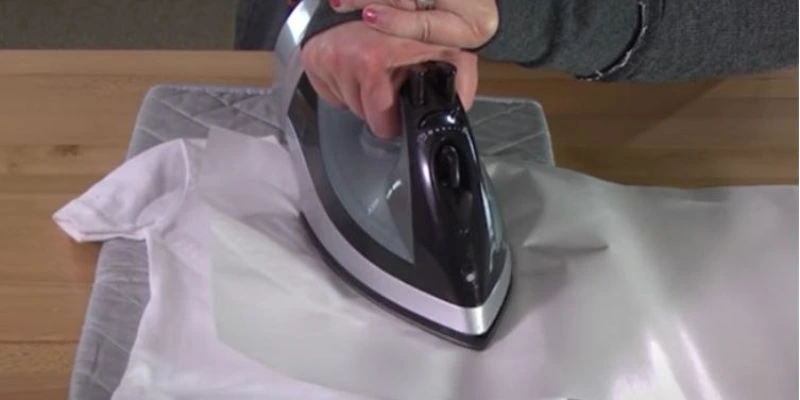
Follow these step-by-step instructions to successfully move heat with an iron:
- Warm up the iron to the temperature that the vinyl maker says it should be. Using the right temperature makes sure that the glue sticks well.
- Iron the item of clothing that will be heated. This makes sure that the surface is smooth, getting rid of any wrinkles or folds that might get in the way of the design.
- Place the vinyl on the garment and make sure it is straight to get a pattern that is centered and balanced. Use the garment’s lines as guides to make sure it’s straight. A fold in the fabric can be used as a guide for placing things straight.
- Press down hard on the vinyl with the iron for about 15 seconds, making sure not to move it. Bonding works best when there is steady pressure. During this step, don’t move or shake the iron.
- Let go of the pressure after 15 seconds, and slowly peel the carrier sheet off of the vinyl. If any part of the vinyl lifts or comes off, stop pressing that area and do it again.
- Repeat the ironing process for any other vinyl design parts or layers, making sure to use the same amount of pressure and heat the whole time.
It is more likely that you will get good heat transfer results with an iron if you follow these steps, practice good skills, and use high-quality materials. It may take some trial and error to get the results you want, so be patient and keep practicing.
A heat press machine has more features, like more accurate temperature control and even pressure distribution, but iron can still work for smaller jobs or for people who are just starting. If you follow the right steps, you can get good heat transfer results.
The Four Important Factors To Consider:
1) Duration:
Time is of the essence when applying vinyl, and household iron doesn’t come with a built-in timer. To keep track of the passing seconds, use a smartphone or tablet device. Overtime and undertaking will be eradicated.
2) Temperature:
The temperature of a heat press can be adjusted. Because household iron cannot withstand temperatures up to 400 degrees Celsius, HTV cannot be used. Certain high-tech household irons allow you to change the temperature.
Neither medium nor high nor medium to low will work. You must have a well-defined temperature range to heat press vinyl.
If you do not possess an iron with an easily discernible temperature range. To prevent burning or inadequate bonding, preheat the iron for 10 minutes and check the temperature using a thermometer.
3) Pressure:
Using a heat press ensures uniform pressure throughout the whole surface. The pressure needed to adhere to different types of vinyl is different. Ironing vinyl requires a specific amount of human pressure: firm, even pressure, depending on the type of vinyl. Be careful not to push down too firmly, since it could warp the pattern.
4) Cold Peel vs. Hot Peel:
The cold peel or hot peel status of a vinyl sheet is typically indicated on the packaging. Quickly removing the carrier sheets is a common practice while working with hot vinyl sheets. Quick and easy vinyl-to-substrate transfer is possible with this technique.
Because the vinyl’s adhesive is softer when heated, it can adhere to cloth fibers more rapidly. It is usual practice to utilize hot peeling with sublimation transfers and heat transfer vinyl (HTV).
In contrast, cold-peel vinyl sheets necessitate that the transfer cools entirely before the carrier sheet is peeled off, as the name implies. Vinyl can be bonded to fabric with this approach, but it takes time.
Related Post: Can You Sublimate On Modal Fabric
Bottom Line:
Yes, a heat press is useful, but a regular iron is cheaper. And there is no other choice than a heat press machine if you want to start making money printing or crafting T-shirts. But what if you don’t have much money but still want to print and make things? we have a solution: you can buy a Cricut Easypress, which is pretty cheap and costs about the same as a regular iron. It’s easy to get and you can start planning your ideal journey right away.
FAQ
Last Updated on March 19, 2025 by Muhammad Haseeb


